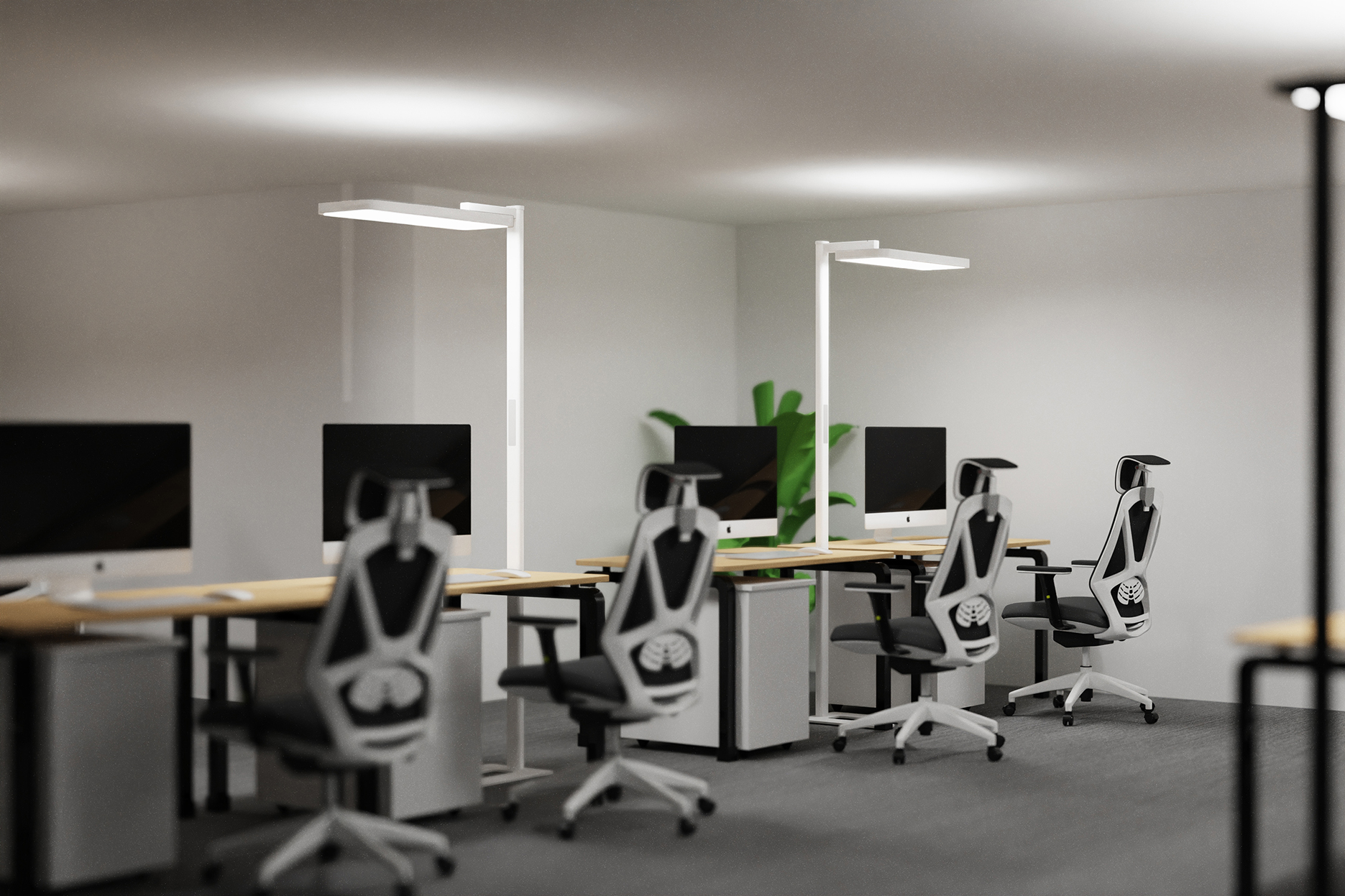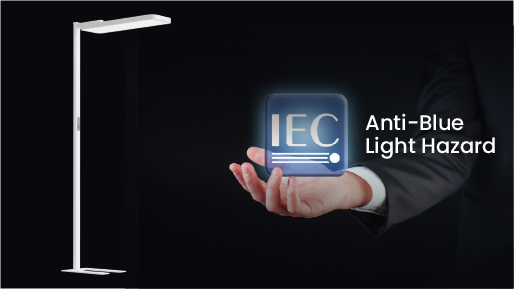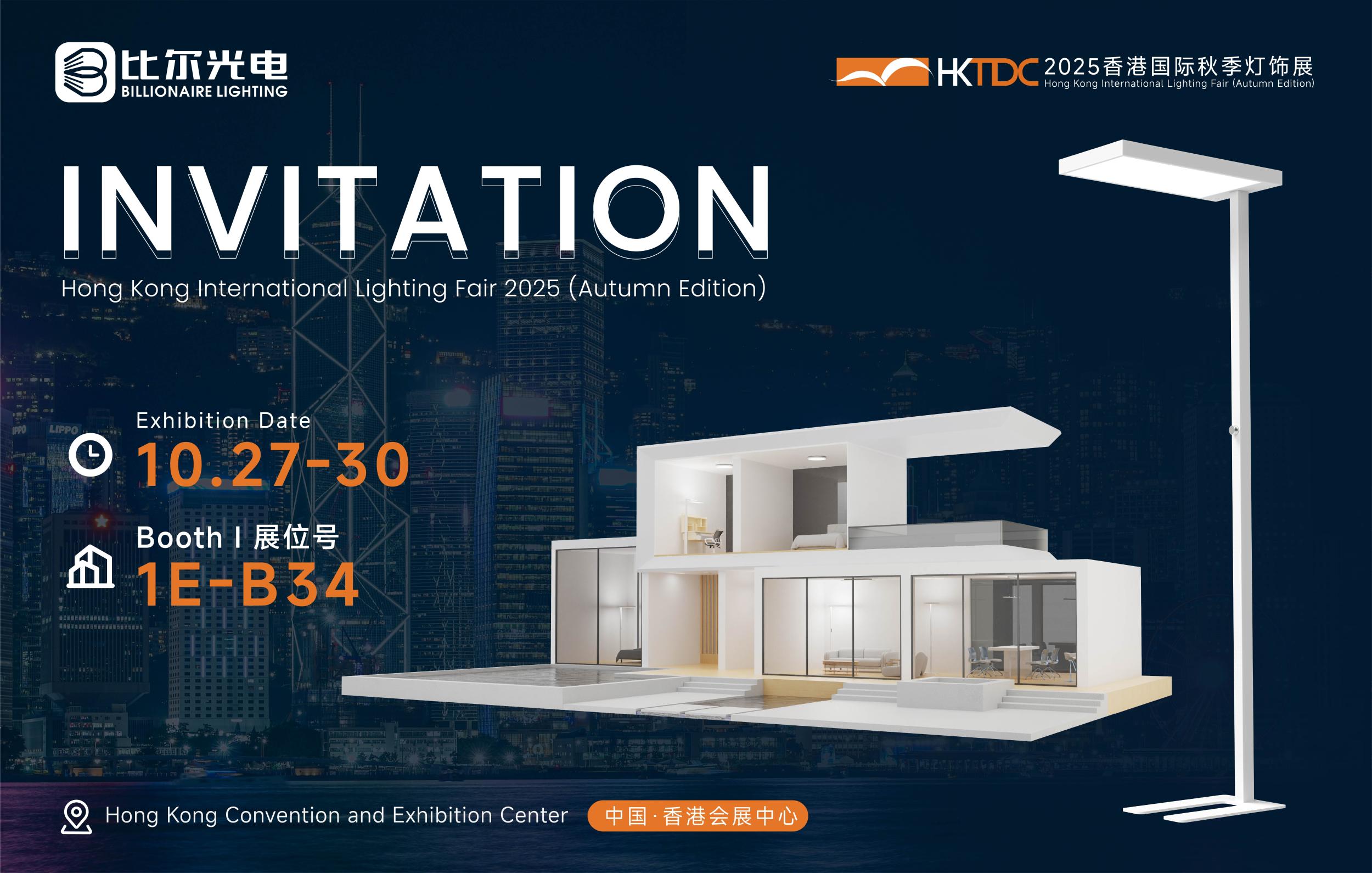Introduction
In the modern era, an increasing number of people are working from home. A well - lit home office is not only essential for productivity but also for the health of your eyes. Prolonged exposure to improper lighting can lead to a variety of eye problems, including eye strain, fatigue, dry eyes, and even potential long - term vision issues. This article will explore the key elements of the best home office lighting for eyes, covering different types of lighting sources, their characteristics, and how to set up an optimal lighting environment.
Understanding the Impact of Lighting on Eye Health
Eye Strain and Fatigue
Poor lighting in a home office can cause significant eye strain and fatigue. When the light is too dim, your eyes have to work harder to focus on the text or objects in front of you. This continuous effort can lead to muscle fatigue in the eyes, resulting in discomfort, headaches, and reduced productivity. On the other hand, overly bright or glare - producing lights can also be a problem. Glare can create a contrast that makes it difficult for the eyes to distinguish details, forcing them to constantly adjust, which is equally tiring. For example, if you have a window in your home office and the sunlight reflects directly onto your computer screen, it can cause intense glare, making it nearly impossible to read the screen without straining your eyes.
Disruption of Circadian Rhythm
Light plays a crucial role in regulating our body's internal clock, known as the circadian rhythm. In a home office, the type of light you are exposed to during the day can impact your sleep - wake cycle. Blue - rich light, which is present in high - intensity in some lighting sources, is beneficial during the day as it helps to boost alertness. However, exposure to excessive blue light, especially in the evening, can suppress the production of melatonin, a hormone that regulates sleep. This disruption of the circadian rhythm can lead to sleep problems, which in turn can affect the health of your eyes. Reduced sleep can cause dry eyes, increased sensitivity to light, and further eye fatigue.
Long - Term Vision Risks
Chronic exposure to inappropriate lighting over an extended period may pose long - term risks to your vision. Ultraviolet (UV) light, although less common in indoor lighting, can still be present in some older - style fluorescent lamps. Prolonged exposure to UV light can damage the cornea and the lens of the eye, increasing the risk of developing cataracts and other eye diseases. Additionally, continuous eye strain and fatigue due to poor lighting can potentially contribute to the progression of myopia (nearsightedness) or other refractive errors, especially in individuals who are already predisposed.
Types of Lighting Sources for a Home Office
Natural Light
Benefits
Natural light is often considered the best light source for the eyes. Sunlight has a full spectrum of colors, providing a balanced and comfortable illumination. It has a high color rendering index (CRI), which means it accurately shows the true colors of objects. Natural light also helps to regulate the body's circadian rhythm effectively. When working near a window, the changing intensity and color of natural light throughout the day mimic the natural light cycle, keeping your body's internal clock in sync. This not only benefits your overall well - being but also reduces the likelihood of eye - related problems. Moreover, natural light can improve mood and increase productivity. Studies have shown that employees who work in well - lit, naturally - lit environments are more engaged and have a lower stress level.
Drawbacks and Solutions
However, relying solely on natural light in a home office has its drawbacks. In the morning and evening, the light can be too dim for detailed work. Also, direct sunlight can cause glare on computer screens and work surfaces. To address the issue of dim light, you can supplement natural light with artificial lighting sources during the early morning and late afternoon. For glare, using curtains, blinds, or anti - glare screen protectors can be effective solutions. Sheer curtains can diffuse the sunlight, reducing glare while still allowing sufficient light to enter the room. Anti - glare screen protectors for your computer can also minimize the reflection of sunlight, making it easier to view the screen without straining your eyes.
LED Lighting
Advantages
LED (Light - Emitting Diode) lighting has become increasingly popular for home offices due to its numerous advantages for eye health. LED lights are highly energy - efficient, consuming less power compared to traditional incandescent and fluorescent bulbs. They also have a long lifespan, reducing the need for frequent replacements. In terms of eye - friendliness, LED lights can be designed to have a high CRI, providing a natural - looking light that accurately reveals colors. Many LED bulbs and fixtures offer adjustable color temperature, allowing you to choose between warm, soft light (around 2700K - 3500K) and cool, white light (5000K - 6500K). Warm light is suitable for creating a cozy atmosphere and is less stimulating to the eyes, which can be beneficial during breaks or in the evening. Cool white light, on the other hand, mimics natural daylight and is ideal for tasks that require high concentration, such as reading, writing, or working on visual projects. Additionally, LED lights emit very little heat, reducing the risk of discomfort and potential fire hazards.
Considerations
When choosing LED lighting for your home office, it's important to select products that have low blue - light emission. Some LED lights, especially those with a high color temperature, can emit a significant amount of blue light. Look for LED bulbs or fixtures that are labeled as "low - blue - light" or "eye - friendly." Also, make sure the LED lights you choose have a smooth dimming function. Abrupt changes in brightness can cause eye discomfort, so a lamp with a gradual dimming feature is preferable.
Fluorescent Lighting
Features
Fluorescent lighting has been a common choice in offices for many years. Fluorescent bulbs produce light by passing an electric current through a gas - filled tube, which contains mercury vapor. These lights are relatively energy - efficient and can provide bright illumination. Some fluorescent bulbs are designed to have a high CRI, although traditional fluorescent lights often had a reputation for producing a harsh, unnatural light. Modern fluorescent fixtures, however, come in a variety of color temperatures, from warm to cool, allowing for more customization.
Disadvantages and Alternatives
One of the main drawbacks of fluorescent lighting is the potential for flicker. The electrical current in fluorescent bulbs can cause a slight flicker, which, although often imperceptible to the naked eye, can still cause eye strain over time. Additionally, as mentioned earlier, older - style fluorescent lamps may emit UV light, which is harmful to the eyes. If you already have fluorescent lighting in your home office and are concerned about its impact on your eyes, you can consider replacing the bulbs with high - quality, flicker - free, and UV - free fluorescent bulbs. Another option is to use a full - spectrum fluorescent bulb, which is designed to mimic natural light more closely. However, if possible, LED lighting is generally a more eye - friendly alternative to fluorescent lighting.
Incandescent Lighting
Characteristics
Incandescent bulbs work by heating a filament inside the bulb until it glows. They produce a warm, yellowish light that is often considered cozy and inviting. Incandescent lights have a relatively high CRI, which means they render colors well.
Limitations for Home Offices
However, incandescent lighting is not the best choice for a home office in terms of eye health and energy efficiency. They are very energy - inefficient, converting a large amount of electrical energy into heat rather than light. The warm, yellowish light can also be too dim for detailed work, and it may not provide sufficient contrast for tasks such as reading small text or working on visual materials. Additionally, incandescent bulbs have a relatively short lifespan compared to LED and fluorescent lights. Due to these limitations, incandescent lighting is not recommended as the primary lighting source for a home office, although it can be used sparingly for accent lighting or to create a certain ambiance during breaks.
Designing an Eye - Friendly Home Office Lighting Setup
Ambient Lighting
Importance
Ambient lighting provides overall illumination for the home office. It sets the general level of brightness in the room and helps to reduce shadows. In an eye - friendly lighting setup, ambient lighting should be evenly distributed and not too bright or too dim. A well - lit ambient environment makes it easier for your eyes to adjust when moving between different tasks or looking away from your work surface.
Options
Ceiling - mounted fixtures, such as recessed lights or pendant lights, are common sources of ambient lighting. When using recessed lights, choose fixtures with a diffuser to soften the light and reduce glare. Pendant lights can add a decorative element to the room while providing light. You can also use wall sconces to supplement ambient lighting, especially in corners or areas where ceiling lights may not reach. If you prefer a more natural - looking ambient light, consider using a daylight - balanced fluorescent or LED panel light in the ceiling.
Task Lighting
Significance
Task lighting is crucial for specific work tasks in the home office, such as reading, writing, or using a computer. It provides focused illumination directly on the work area, reducing eye strain by ensuring that the details are clearly visible.
Types of Task Lighting
A desk lamp is the most common form of task lighting for a home office. When choosing a desk lamp, look for one with adjustable brightness and color temperature. An LED desk lamp with a flexible neck is ideal as it allows you to direct the light precisely where you need it. For example, if you are using a combination of a computer and a notebook, you can adjust the lamp to evenly light both surfaces. Some desk lamps also come with additional features like anti - glare lenses or built - in reading lights. If you do a lot of work on a drafting table or a large work surface, a floor - standing task lamp with an adjustable head can be a good option.
Accent Lighting
Function
Accent lighting is used to highlight specific areas or objects in the home office, such as a bookshelf, a piece of artwork, or a plant. While it may not directly contribute to the functionality of the work area, it can enhance the overall aesthetics of the room and create a more pleasant working environment.
Placement and Choice
Wall - mounted picture lights can be used to accentuate artwork. LED strip lights can be installed under bookshelves or along the edges of a desk to add a soft, decorative glow. When choosing accent lighting, make sure the color temperature and brightness complement the overall lighting scheme of the room. Avoid using overly bright or harsh - colored accent lights that could cause visual distractions.
Lighting Control
Dimmers
Installing dimmers for your ambient and task lighting is highly recommended. Dimmers allow you to adjust the brightness of the lights according to your needs at different times of the day. For example, in the morning when the natural light is already bright, you can dim the artificial lights. In the evening, when the natural light fades, you can increase the brightness. This not only helps to save energy but also provides a more comfortable lighting environment for your eyes.
Smart Lighting Systems
Smart lighting systems, which can be controlled via a smartphone app or voice - controlled assistants like Amazon Alexa or Google Assistant, offer even more flexibility. You can set schedules for your lights to turn on and off automatically, adjust the color temperature remotely, and create different lighting scenes. For instance, you can create a "work mode" with bright, cool white light and a "relax mode" with warm, dim light. Smart lighting systems also allow you to monitor the energy consumption of your lights, helping you to be more energy - conscious.
Additional Tips for Eye - Friendly Home Office Lighting
Maintain a Clean Workspace
Dust and dirt on your computer screen, desk, and lamp can reflect and scatter light, causing glare and reducing the quality of the light. Regularly clean your computer screen with a suitable screen cleaner and a soft cloth. Wipe down your desk and lamp to keep them free of dust. This simple step can significantly improve the lighting conditions in your home office and reduce eye strain.
Take Regular Breaks
No matter how well - lit your home office is, it's important to take regular breaks from your work. The 20 - 20 - 20 rule is a good guideline: every 20 minutes, look away from your work and focus on an object at least 20 feet away for at least 20 seconds. This helps to relax the eye muscles and reduce fatigue. During breaks, you can also blink frequently to keep your eyes moist, especially if you are working in a dry environment.
Consider the Color Scheme of the Room
The color of the walls, furniture, and other elements in your home office can affect the way light is reflected and absorbed. Light - colored walls and furniture tend to reflect light, making the room brighter and more evenly lit. Dark - colored surfaces, on the other hand, absorb light, which can create shadows and make the room feel dimmer. Choosing a light - colored color scheme for your home office can enhance the effectiveness of your lighting setup and contribute to a more comfortable visual environment for your eyes.
In conclusion, creating the best home office lighting for eyes involves a combination of choosing the right lighting sources, designing an appropriate lighting setup, and implementing additional measures to protect your eyes. By paying attention to these details, you can create a home office environment that not only promotes productivity but also safeguards the health of your eyes.



